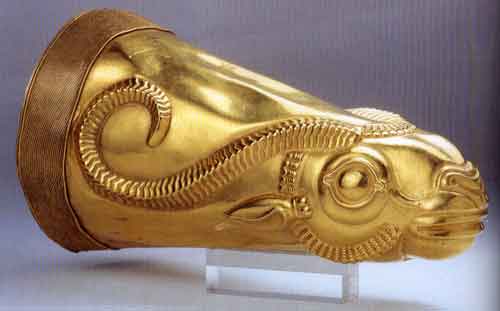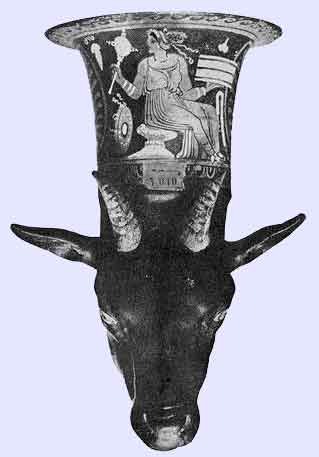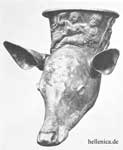|
|

Golden Rhyton from Iran's Achaemenid period. Excavated at Ecbatana. Kept at National Museum of Iran. A Rhyton (Greek ῥυτόν rutón) is a ceremonial drinking cup shaped like an animal head or horn. Rhyta were favored ceremonial wine vessels in the Ancient Near East and in Persia from the second millennium BC onwards. In Minoan Crete, silver and gold bull's heads with round openings for the wine to come from the bull's mouth seemed particularly appropriate, for several have been recovered from the great palaces (Heraklion Museum). In Nonnos' epic Dionysiaca, he describes the satyrs at the first discovery of wine-making: ...the fruit bubbled out red juice with white foam. They scooped it up with oxhorns, instead of cups which had not yet been seen, so that ever after the cup of mixed wine took this divine name of 'Winehorn' ('Dionysiaca' XII 361-362.) Karl Kerenyi in quoting this passage (Kerenyi 1976 p 60) remarks "At the core of this richly elaborated myth, in which the poet even recalls the rhyta, it is not easy to separate the Cretan elements from those originating in Asia Minor." Reference
Retrieved from "http://en.wikipedia.org/"
 |
|
|||||||||||||||||




